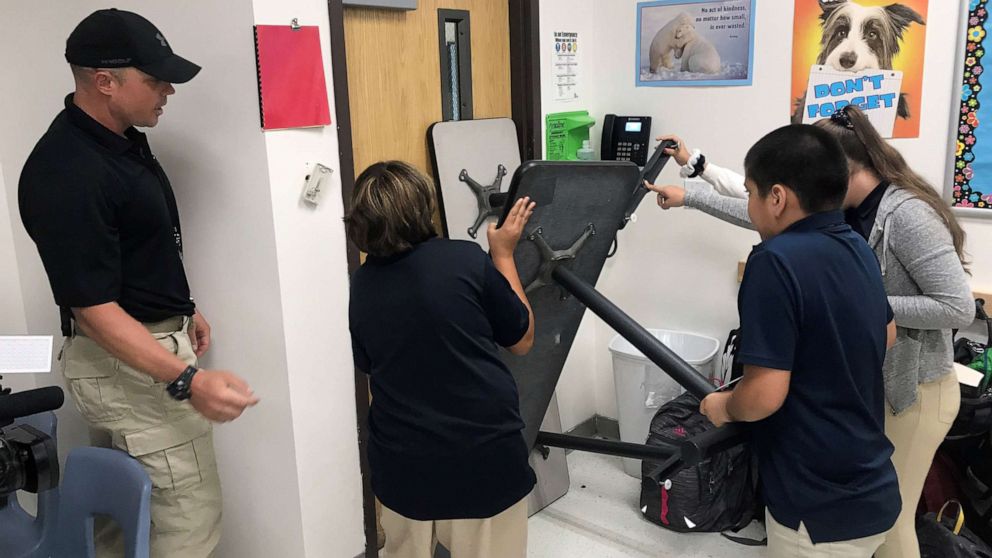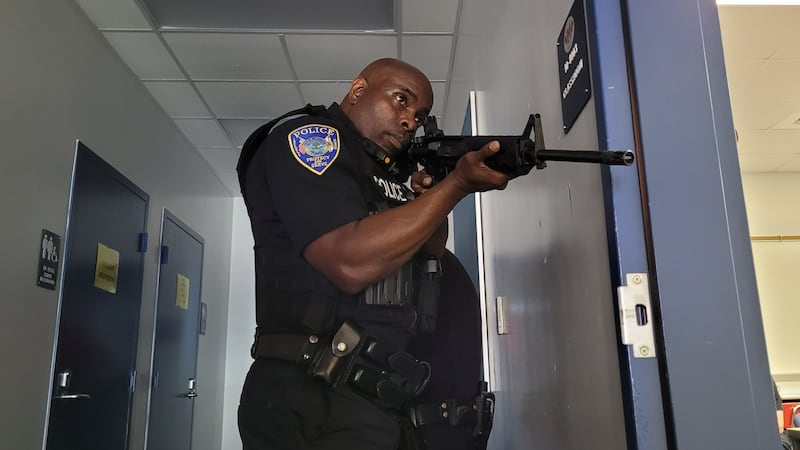The Value of Active Shooter Training in High-Risk Atmospheres
The Value of Active Shooter Training in High-Risk Atmospheres
Blog Article
The Important Role of Active Shooter Training in Enhancing Emergency Reaction Methods in Numerous Environments
Active shooter training has become an essential component in refining emergency situation feedback techniques throughout diverse setups, from schools to business settings. By furnishing people with customized knowledge and skills, these programs not just prepare participants for prospective situations but also cultivate a culture of understanding and partnership. However, the efficiency of such training depends upon numerous aspects, including the particular context in which it is executed and the continuous dedication to improvement. Exploring these dimensions exposes critical understandings that could significantly affect preparedness and reaction results in the face of alarming hazards.
Relevance of Energetic Shooter Training
In an era marked by enhancing worries over public security, the value of energetic shooter training can not be overemphasized. As cases of weapon physical violence in public spaces remain to climb, companies throughout numerous sectorsâEUR" instructional institutions, workplaces, and public venuesâEUR" are recognizing the necessity of preparing their personnel and neighborhoods for such emergencies. Active shooter training gears up individuals with critical skills and knowledge to respond efficiently in lethal scenarios, possibly decreasing casualties and conserving lives.
The training not just focuses on immediate action activities, such as evacuation and safeguarding in location, yet additionally cultivates a culture of understanding and readiness. By involving in practical simulations and discussions, individuals can recognize potential susceptabilities within their atmosphere and establish approaches for mitigating threats. Additionally, such training boosts interaction and sychronisation amongst employee and very first -responders, ensuring an extra unified method during crises.

Key Parts of Effective Training
Effective energetic shooter training consists of a number of vital parts that boost preparedness and response abilities. Primarily, sensible scenario-based simulations are critical. These workouts submerse individuals in high-stress scenarios that mimic potential energetic shooter events, enabling them to exercise decision-making and physical responses under pressure.
Additionally, training should include a thorough understanding of communication protocols. Participants ought to be skilled in just how to pass on critical information to police and fellow individuals during an event. This includes making use of emergency alerts and comprehending the pecking order.
Another vital part is the unification of mental health awareness. Training should address the psychological impact of active shooter situations, equipping participants with dealing approaches and resources to sustain their psychological health post-incident.
In addition, normal correspondence course are essential to make certain that abilities continue to be sharp and knowledge is up-to-date. This continual education and learning enhances the importance of readiness and fosters a culture of security within organizations.
Training for Various Settings
Energetic shooter training must be tailored to the specific atmospheres in which people run, as each establishing presents one-of-a-kind obstacles and dynamics. Training in a company workplace will differ significantly from that in a school, shopping mall, or healthcare center. Each environment necessitates a tailored strategy that considers elements such as design, populace thickness, and readily available retreat courses.
In schools, training programs need to stress lockdown procedures, communication procedures with police, and techniques for shielding trainees. On the other hand, in corporate settings, training might focus on evacuation methods, identifying suspicious habits, and utilizing offered sources for protection or shelter-in-place situations.
Additionally, public places like shopping centers or sporting occasions require substantial group administration techniques, with a focus on rapid response control among safety workers and neighborhood regulation enforcement.
In healthcare atmospheres, training needs to resolve specific vulnerabilities, such as the existence of clients who may need instant support. By comprehending the unique features of each setting, companies can create reliable training components that improve readiness and enhance general security, making sure that people are furnished to respond properly in diverse situation scenarios.

Structure a Society of Recognition
Developing a culture her response of awareness is basic to improving safety measures in any kind of setting, as it equips individuals to acknowledge prospective risks and respond proactively. This society requires continuous education and learning, open interaction, and the combination of security protocols right into day-to-day regimens.
Organizations needs to focus on active shooter training as component of their overarching safety strategy, guaranteeing that all employees understand the certain risks linked with their atmosphere. Normal training sessions cultivate watchfulness and familiarity with emergency situation procedures, urging people to stay alert to uncommon habits or scenarios.
Moreover, promoting a culture of awareness involves creating an environment where reporting suspicious activity is both encouraged and normalized. active shooter training. Workers need to really feel comfy sharing their problems without worry of retribution. This can be accomplished via clear networks of communication and supportive leadership
Additionally, taking part in neighborhood collaborations can increase awareness beyond organizational boundaries, advertising a common duty for safety and security. Efforts such as workshops, drills, and informational sessions can further enhance cumulative alertness. Inevitably, constructing a society of recognition not why not look here just prepares individuals for prospective dilemmas however likewise enhances the total strength of the company versus dangers.
Reviewing Educating Performance
While routine training sessions are vital for preparedness, assessing their efficiency is equally essential to ensure that personnel are equipped with the needed skills and knowledge to react suitably in case of an active shooter scenario. Analysis procedures ought to include both qualitative and measurable assessments to measure the impact of training on action capabilities.
Studies and responses from individuals can supply useful insights right into the training's significance and applicability. Additionally, performing useful drills and simulations allows companies to observe real-time decision-making and teamwork under stress. Evaluating the outcomes of these workouts assists recognize staminas and areas for renovation.

Entailing stakeholders, including police and emergency -responders, in the assessment process can boost integrity and provide a comprehensive point of view on training efficacy (active shooter training). Inevitably, a methodical analysis strategy makes certain that active shooter training stays a crucial component of a company's emergency action approach, promoting a more secure atmosphere for all
Final Thought
Energetic this article shooter training is essential in fortifying emergency reaction techniques throughout varied environments. Ultimately, the application and assessment of efficient training programs contribute substantially to mitigating the impact of active shooter circumstances, thus securing lives and enhancing neighborhood resilience.
Report this page